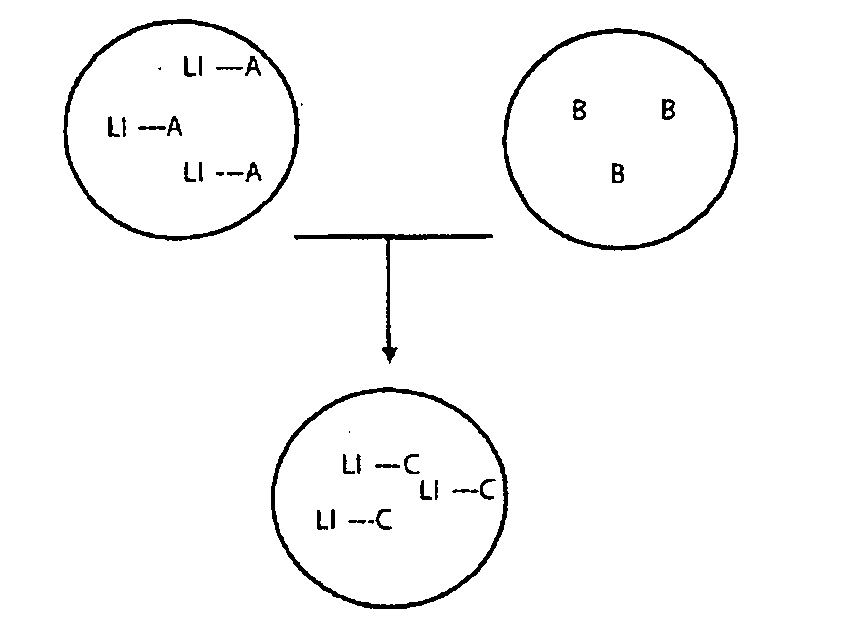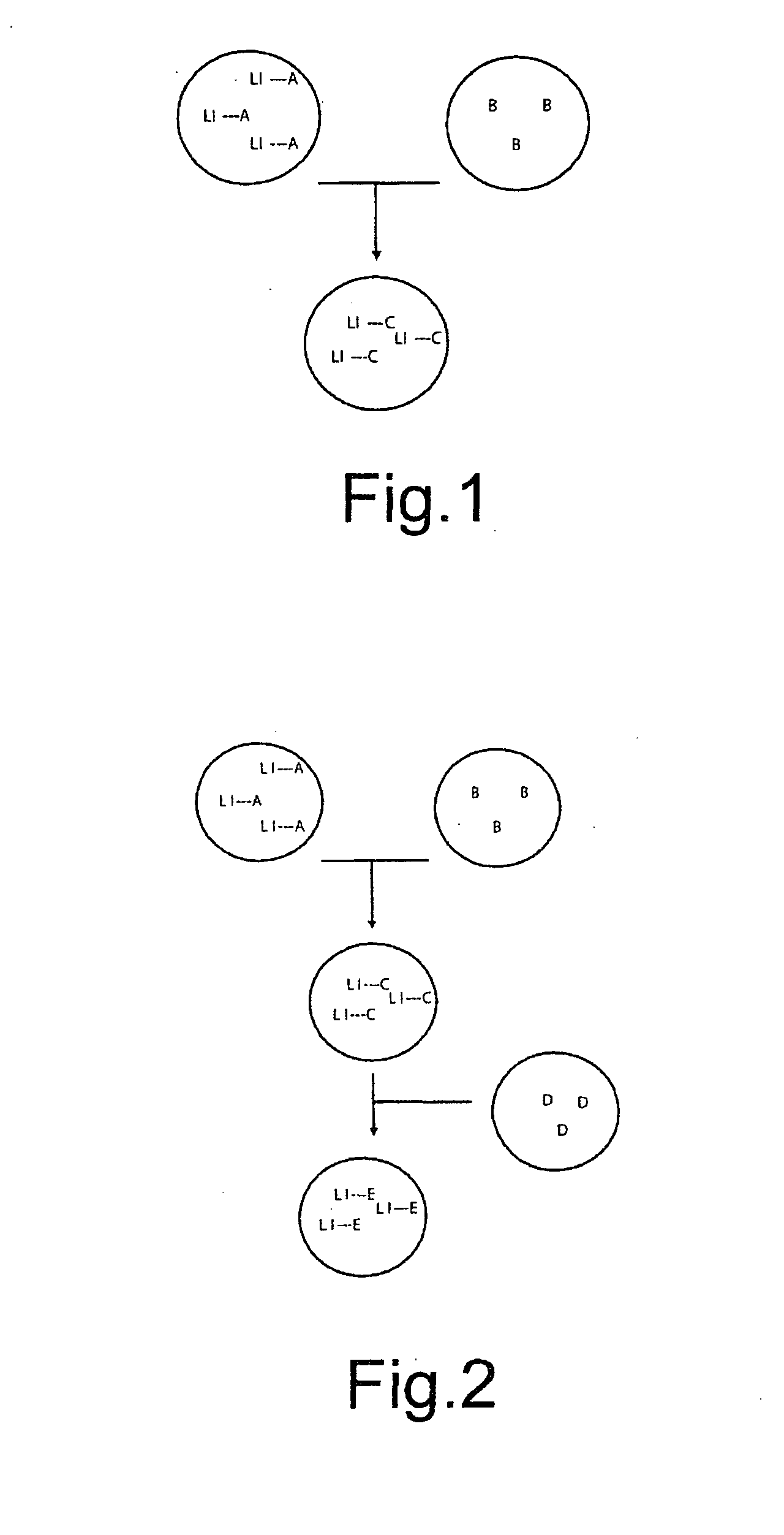Droplet Microreactor
a micro-reactor and droplet technology, applied in the field of droplet micro-reactors, can solve the problems of user toxicity, difficult to prevent dead volumes, and difficult to use, and achieve the effect of convenient purification and inexpensive fabrication
- Summary
- Abstract
- Description
- Claims
- Application Information
AI Technical Summary
Benefits of technology
Problems solved by technology
Method used
Image
Examples
example 1
Implementation of the Method of the Present Invention with Displacement of the Droplets so as to Carry Out a Series of Several Chemical Reactions: in the Case of the Grieco Reaction
[0174]Three droplets of ionic liquids, each having a volume of 0.5 μl, are deposited onto a Teflon-coated surface of the reaction chamber described in document [16] and represented schematically in the attached FIGS. 3 and 6.
[0175]The droplets used in this example have the following composition:[0176]droplet 1: droplet of 4-aminobenzoic acid supported on ammonium salt 1 (see reaction scheme below) in a 1 M solution in [tmba] [NTf2][0177]droplet 2: droplet of 2 equivalents of 4-nitro-benzaldehyde and 1.2 equivalents of TFA in a 0.5 M solution in [tmba][NTf2]; and[0178]droplet 3: droplet of 10 equivalents of indene in a 1 M solution in [tmba][NTf2].
[0179]The droplet displacement technique used in this example is an electrowetting displacement technique which operates as represented schematically in FIG. 6 (...
example 2
Detritylation Reaction Carried Out According to the Method of the Present Invention
[0202]Two droplets of matrix ionic liquid ([btma] [NTf2]), each of 0.5 μl, are deposited on the Teflon-coated surface of the reaction chamber described in document [16].
[0203]Each of the droplets contains a reagent: droplet No. 1 contains a tritylated thymidine base and droplet No. 2 contains dichloroacetic acid.
[0204]Droplet No. 1 is made to converge towards the other droplet using the electrowetting technique. The voltage applied is 45 V.
[0205]After fusion of the two droplets, the mixture is incubated at ambient temperature for 5 minutes. An orangey coloration of the droplet demonstrates the formation of the desired product.
[0206]The chemical reaction carried out is the following:
[0207]In which DCA is dichloroacetic acid and EWOD represents the displacement by electrowetting.
example 3
Implementation of an Enzymatic Reaction
[0208]A first reaction mixture is prepared as follows: 50 mM citrate-phosphate buffer, pH 6.5 (10 ml), o-phenylene-diamine (OPD, 20 mg) and aqueous hydrogen peroxide (4 μl).
[0209]A droplet of this mixture, 0.5 μl in volume, is dissolved in matrix ionic liquid ([btma] [NTf2]) (0.5 μl).
[0210]A second reaction mixture is prepared as follows: matrix ionic liquid ([btma] [NTf2]) (0.9 μl) and horseradish peroxidase (0.1 μl at 20 μm).
[0211]A droplet (0.5 μl) of each of the mixtures is deposited onto the Teflon-coated surface of the reaction chamber used in Examples 1 and 2 above.
[0212]Droplet No. 2 is made to converge towards the other droplet using the electrowetting technique. The voltage applied is 45 V.
[0213]After fusion of the two droplets, the mixture is incubated at ambient temperature for 20 minutes.
[0214]A brown coloration characteristic of the enzymatic reaction for forming 2,3-diaminophenazine is observed.
Example 4
Implementation of the Meth...
PUM
 Login to View More
Login to View More Abstract
Description
Claims
Application Information
 Login to View More
Login to View More - R&D
- Intellectual Property
- Life Sciences
- Materials
- Tech Scout
- Unparalleled Data Quality
- Higher Quality Content
- 60% Fewer Hallucinations
Browse by: Latest US Patents, China's latest patents, Technical Efficacy Thesaurus, Application Domain, Technology Topic, Popular Technical Reports.
© 2025 PatSnap. All rights reserved.Legal|Privacy policy|Modern Slavery Act Transparency Statement|Sitemap|About US| Contact US: help@patsnap.com



